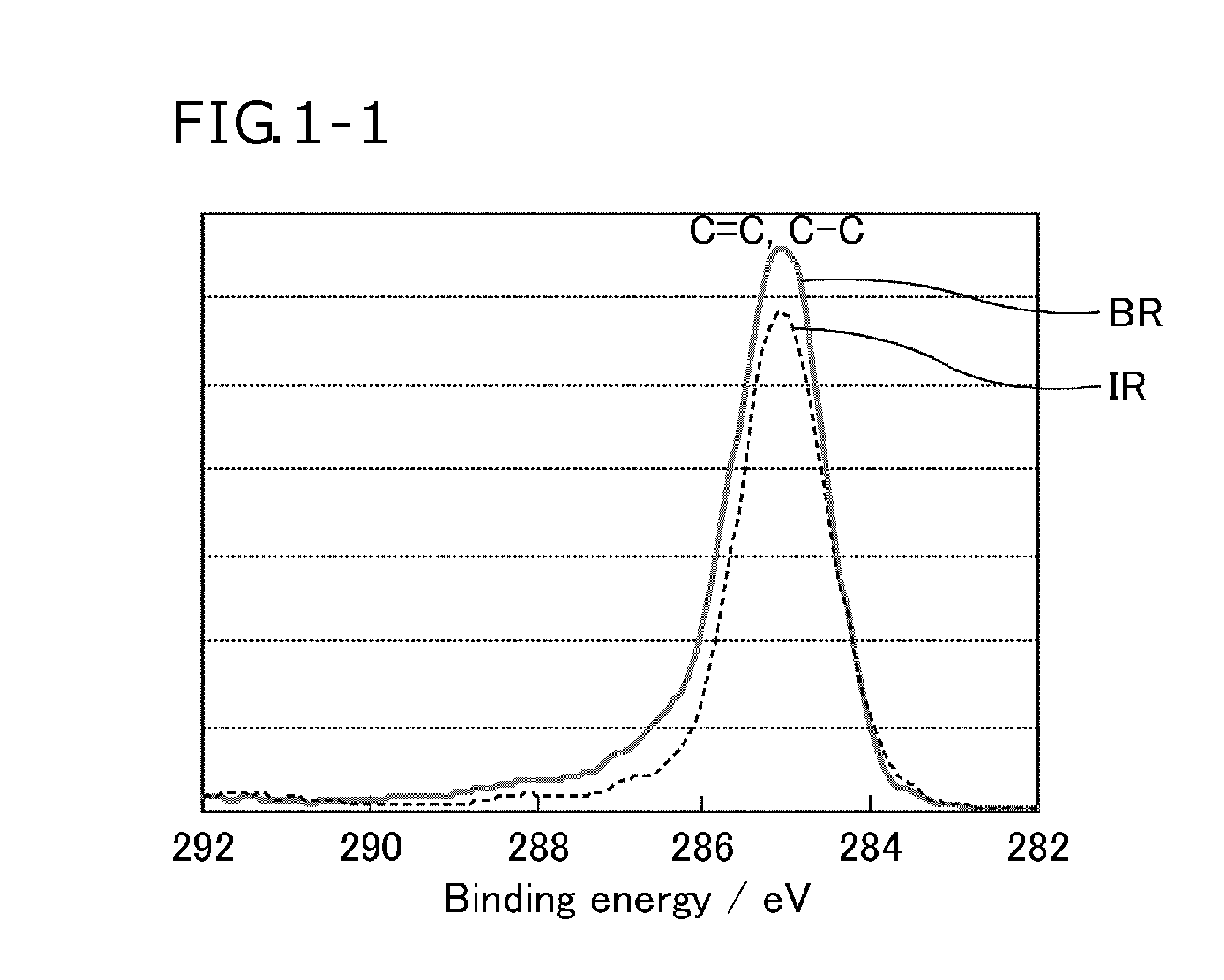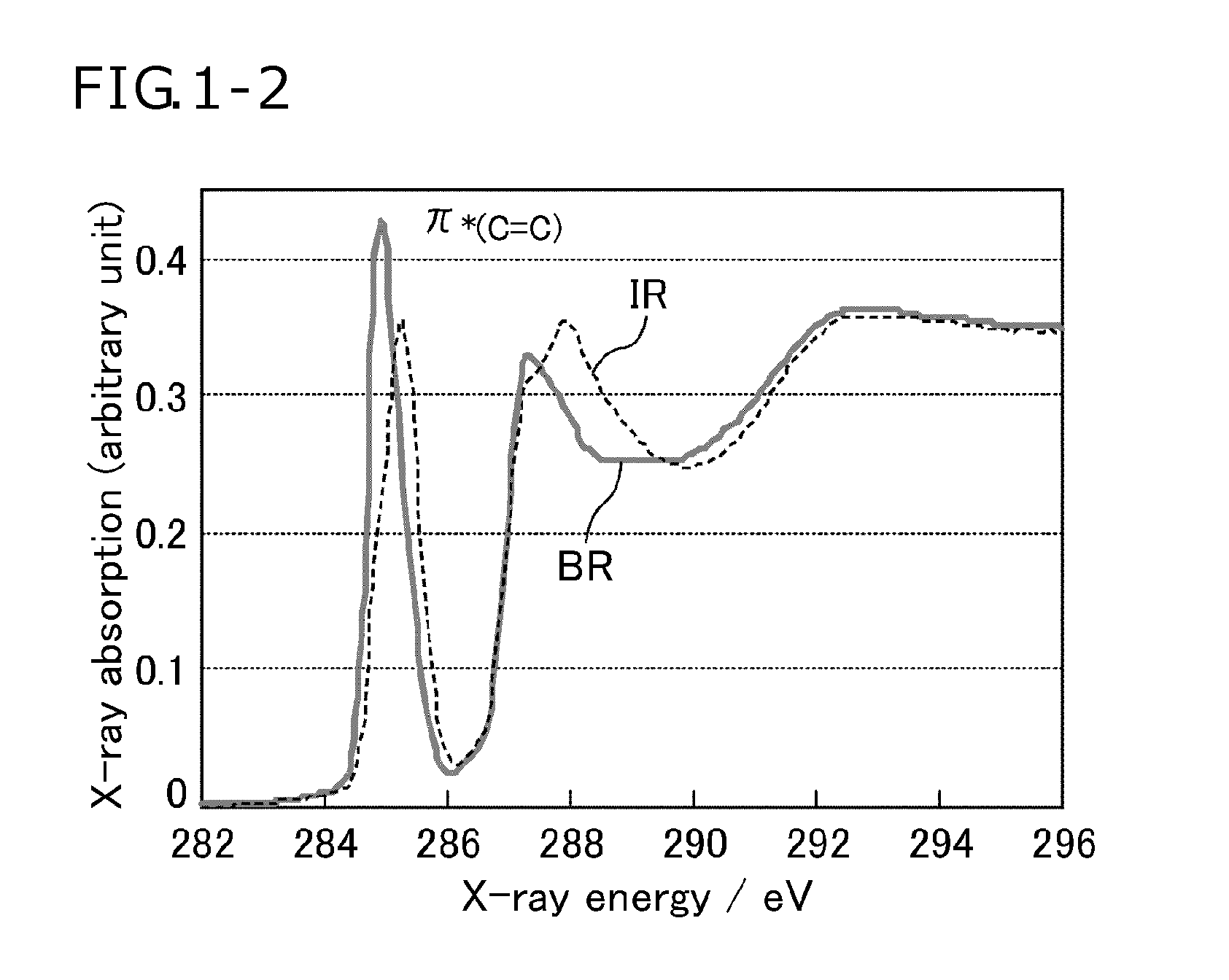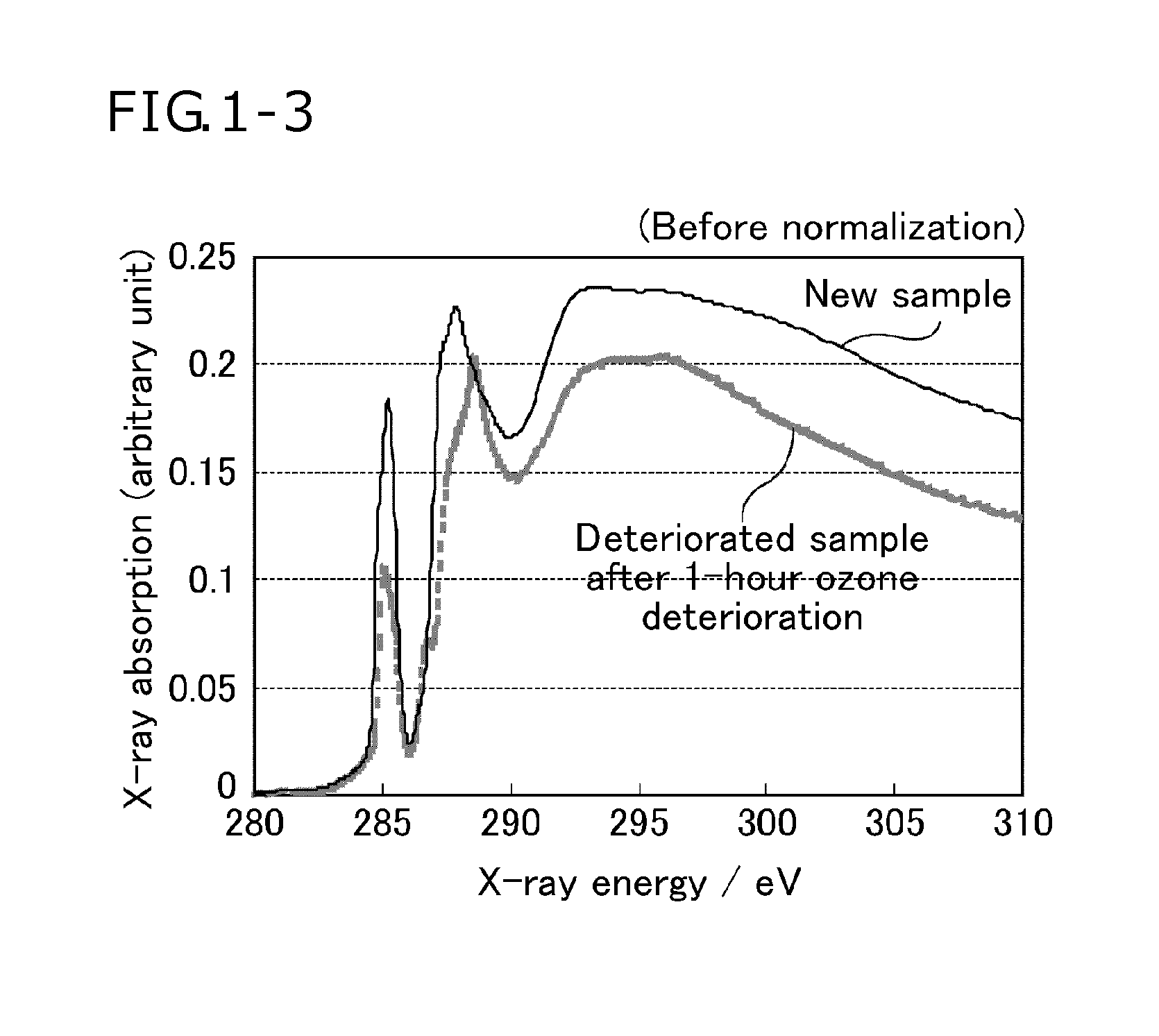Deterioration analyzing method
a deterioration analysis and analyzing method technology, applied in the direction of material analysis using wave/particle radiation, chemical property prediction, instruments, etc., can solve the problems of difficult to analyze in detail the deterioration of each rubber component in a rubber blend, and difficult to determine the degree of deterioration of each rubber component. , to achieve the effect of determining the deterioration of polymers, high intensity and
- Summary
- Abstract
- Description
- Claims
- Application Information
AI Technical Summary
Benefits of technology
Problems solved by technology
Method used
Image
Examples
examples
[0172]The present invention is more specifically described with reference to, but not limited to, examples.
examples 1-1 to 1-5
, Comparative Example 1-1
[0173]Deteriorated samples used in the examples and comparative example were prepared from the following rubber materials under the following deterioration conditions. For measurement by the NEXAFS method, samples were processed to have a thickness of at most 100 μm using a microtome. Then the prepared samples were stored in a vacuum desiccator to avoid the effects of oxygen other than deterioration.
[0174]IR: Nipol IR 2200 from ZEON CORPORATION
[0175]BR: Ubepol BR 130B from UBE INDUSTRIES, LTD.
[0176]SBR: Nipol 1502 from ZEON CORPORATION
[0177]NR: TSR20 from Hainan Sinochem Rubber Co., Ltd.
[0178]Product after driving in North America: Tire (made of NR / BR rubber blend) having been driven in North America
[0179]Product after driving in Middle East: Tire (made of NR / BR rubber blend) having been driven in Middle East
(Deterioration Conditions)
[0180]Ozone deterioration: 40° C., 50 pphm (1 hour)
[0181]Oxygen deterioration: 80° C. in the air (7 days)
(Dev...
examples 2-1 and 2-2
, Comparative Examples 2-1 and 2-2
[0192]Deteriorated samples used in the examples and comparative examples were prepared from the following rubber materials under the following deterioration conditions. For measurement by the XPEEM and TEM methods, samples were processed to have a thickness of at most 100 μm using a microtome. Then the prepared samples were stored in a vacuum desiccator to avoid the effects of oxygen other than deterioration.
[0193]IR: Nipol IR 2200 from ZEON CORPORATION
[0194]NR: TSR20 from Hainan Sinochem Rubber Co., Ltd.
[0195]SBR: SBR1502 from LG Chemical
[0196]Product after driving in North America: Tire (made of NR / SBR rubber blend) having been driven in North America
(Deterioration Conditions)
[0197]Ozone deterioration: 40° C., 50 pphm (1 hour)
(Device)
[0198]XPEEM: Spectroscopic photoemission and low energy electron microscope (SPELEEM: product of Elmitec) attached to beamline BL17SU of SPring-8
[0199]TEM: JEM2100F from JEOL Ltd.
[0200]The degree (%) ...
PUM
| Property | Measurement | Unit |
|---|---|---|
| energy | aaaaa | aaaaa |
| energy | aaaaa | aaaaa |
| energy | aaaaa | aaaaa |
Abstract
Description
Claims
Application Information
 Login to View More
Login to View More - R&D
- Intellectual Property
- Life Sciences
- Materials
- Tech Scout
- Unparalleled Data Quality
- Higher Quality Content
- 60% Fewer Hallucinations
Browse by: Latest US Patents, China's latest patents, Technical Efficacy Thesaurus, Application Domain, Technology Topic, Popular Technical Reports.
© 2025 PatSnap. All rights reserved.Legal|Privacy policy|Modern Slavery Act Transparency Statement|Sitemap|About US| Contact US: help@patsnap.com



